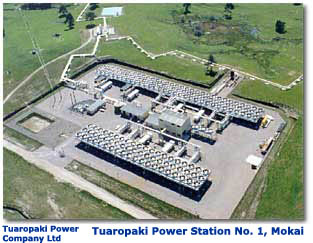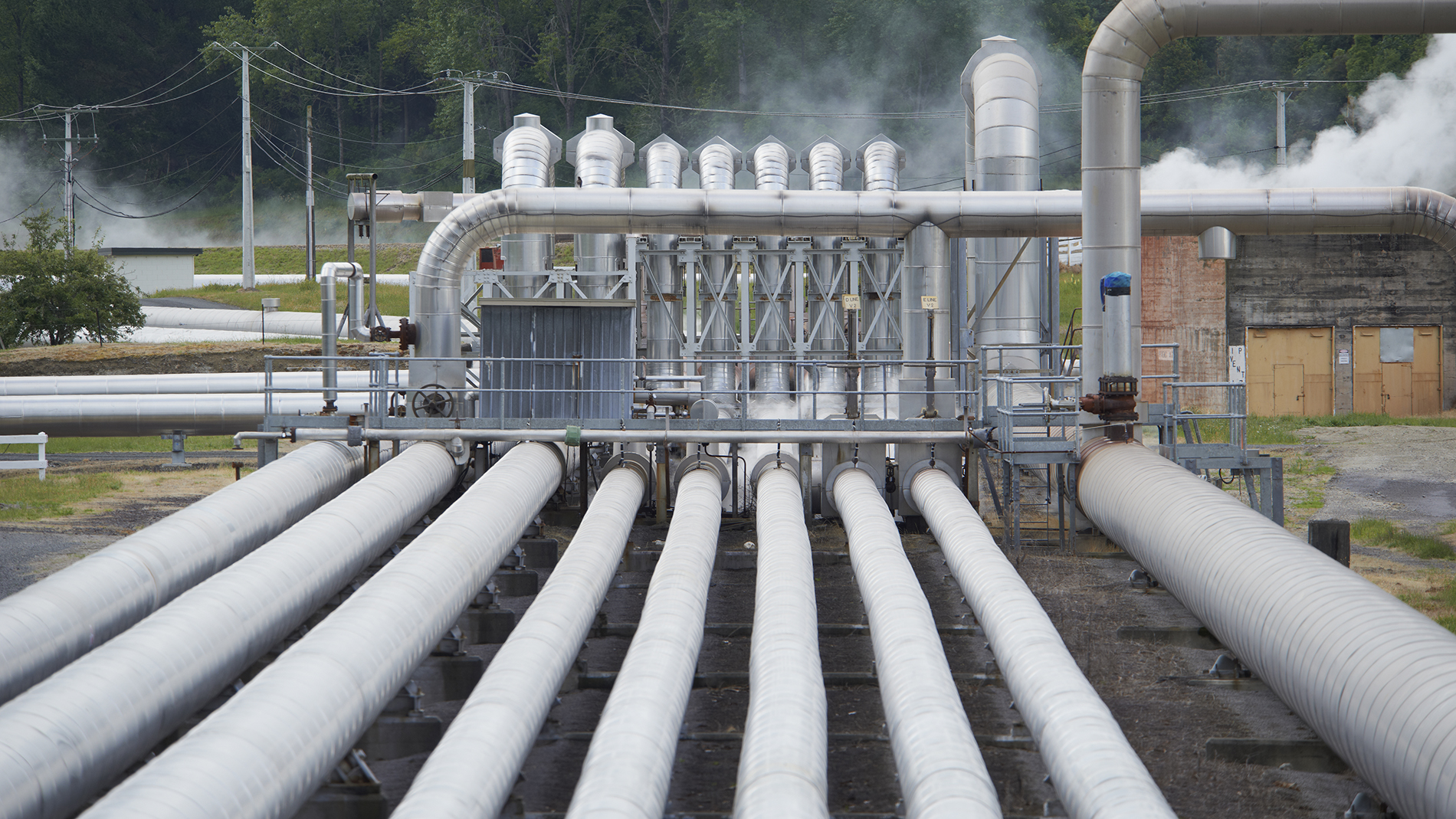Geothermal energy in the Waikato region
Geothermal energy is an important contributor to New Zealand’s electricity supply. But extracting geothermal energy affects the geothermal features and the surrounding environment. Reusing and reinjecting geothermal energy and fluid, and managing the geothermal system as an integrated whole to development helps to minimise the effects.
How much geothermal energy do we use?
Primary energy – In 2018, New Zealand’s total primary energy supply was 890 petajoules (PJ). Twentyone percent (188 PJ) of New Zealand’s primary energy came from geothermal sources.
Primary energy comes directly from natural sources such as the sun, gas and oil, wood, coal and geothermal energy:
- Industries use it for process heat.
- Gas is used in vehicles and for cooking and heating.
- Households use it for heating (burning wood and coal, using geothermal heat and water).
- It is also turned into electricity.
Primary energy obtained from geothermal sources is forecast to increase to 30 per cent of the total by 2030. Estimates say we could extract between 30,000 and 57,000 PJ per year of geothermal energy using present technology. But this could lead to irreversible effects, such as the destruction of geysers and other surface features, and land subsidence.
Electrical energy - In 2018, New Zealand’s total electrical energy supply was 270 PJ per year. Geothermal energy from the power stations in the Waikato region provides about 16 per cent of our national electricity supply.
Waikato region - The Waikato region provides 90 per cent of the primary geothermal energy extracted in New Zealand. Of the geothermal energy extracted, only 15 per cent is converted to a useable form. The rest is re-injected or disposed of into the environment as heat. In the Waikato region there are about 60 separate industries, accommodation facilities and tourist facilities that take small amounts of heat for direct uses.
Where are our power stations?
New Zealand has sixteen geothermal power stations. Ten are in the Waikato region. There are plans to build others and expand existing stations, in the Waikato, Bay of Plenty, and Northland regions. The table below lists the stations in our region.
Geothermal power stations
| Geothermal system | Site | Owner(s) | Productive output (MW) | Year built |
| 1. Wairakei-Tauhara | Wairakei | Contact Energy | 140 | 1958 |
| Wairakei Binary | Contact Energy | 14 | 2005 | |
| Poihipi Rd | Contact Energy | 50 | 1997 | |
| Te Huka | Contact Energy | 24 | 2010 | |
| Te Mihi | Contact Energy | 166 | 2014 | |
| 2. Rotokawa | Rotokawa | Rotokawa Joint Venture | 41 | 1998 |
| Nga Awa Purua | Mercury &TN2T | 140 | 2010 | |
| 3. Mokai | Mokai A | Tuaropaki Power Company | 55 | 2000 |
| Mokai B | Tuaropaki Power Company | 39 | 2005 | |
| Mokai C | Tuaropaki Power Company | 18 | 2007 | |
| 4. Ngatamariki | Ngatamariki | Mercury | 82 | 2013 |
| 5. Ohaaki | Ohaaki | Contact Energy |
As well as these large power stations, about 60 commercial operations use small or medium quantities of geothermal water and energy in the region. Most operations take the water from wells or springs, some obtain it from Contact Energy, and others take water from hot streams such as the Onekeneke at Taupō. This heated water is used mainly for public baths or motel pools, but some is used in primary and industrial processes.
Geothermal systems extend under large areas of land. To find, develop and extract these economic sources of geothermal energy and fluid resources (sometimes as deep as three kilometres below the Earth’s surface) requires large capital investment and complex infrastructures.
What does extraction do to the environment?
Although only a fraction of geothermal energy is currently used, the environmental effects have been dramatic.
Between the 1950s and 1990s, the number of geysers in the region fell because of heat and fluid extraction and the effects of overlying land uses. When water extraction prevents pressure from reaching the level necessary to fuel the geysers, they disappear. As a result, many sinter-depositing springs and geysers and their associated ecosystems were lost with the development of the Wairakei Geothermal Power Station.
Use our map to find out more about the state of geothermal features in the Waikato region.
The extraction of heat and fluid can cause land subsidence. For example, a marae near Ohaaki Geothermal Power Station is sinking and runs the risk of being inundated by the Waikato River, as the ground it sits on subsides.
Effects on other parts of the natural environment are summarised in the table below.
Environmental effects of geothermal contaminants
| Contaminant | Adverse effects | Source of contaminant |
| Arsenic | Lethal at high levels. Lower doses cause a wide range of illnesses including cancer. Toxic to humans, fish and plants. Levels in the Waikato River from Wairakei to the sea exceed drinking water standards. Levels in water cress exceed food standards. The beds of some of the Waikato hydro lakes are identified as contaminated land because of high concentrations of arsenic in the sediment. | Natural geothermal discharges. Separated water from geothermal wells discharged into water. |
| Boron | Toxic to humans at high levels. Toxic to some crops at low levels. | Natural geothermal discharges. Separated water from geothermal wells discharged into water. |
| Heat | Elevated water temperatures may kill fish and aquatic life. Fish may avoid water areas if the temperature rises even slightly above their preferred level. | Separated water and condensed steam from geothermal wells discharged into water. Cooling water passed through geothermal power stations. |
| Hydrogen sulphide | The ‘rotten egg’ smell. This discharge can cause death if concentrations build to dangerous levels in enclosed areas and are inhaled. It can also cause corrosion. Toxic to fish. | Discharges to air from the de–gassing of geothermal fluid. Natural geothermal discharges. |
| Carbon dioxide | A greenhouse gas. This can kill if found in high concentrations in enclosed spaces, such as in power stations. | Released by geothermal powerstations at a rate of about 1/6 that of gas-fired powerstations6. |
| Mercury |
A toxic element. Accumulates in the food chain. Mercury concentrations in some fish from the Waikato River exceed recommended levels for human consumption7. |
Discharged into air from geothermal cooling towers and into water from geothermal wells. |
Find out more about the arsenic levels in the Waikato River.
Reducing the environmental effects of energy extraction
In the past, once geothermal fluid extracted for electricity generation had been through the power station, any excess heat and fluid was discarded. Now increasingly, other industrial and domestic processes use the discarded heat and fluid before it is reinjected into the geothermal system. This means less of the energy extracted is wasted, and less heated water is produced as a by-product. For example:
- A prawn farm near Taupō heats its own freshwater by running it across pipes containing geothermal water used by its neighbour, the Wairakei Geothermal Power Station.
- At Ohaaki, geothermal heat is used to treat timber.
Developers must obtain resource consents prior to developing geothermal areas. The resource consent process requires consultation with iwi and considers potential effects on waahi tapu and other significant sites. Significant adverse environmental effects must be avoided, remedied, or mitigated.
Each power station needs a set of about 15 resource consents to cover such activities as taking geothermal fluid and fresh water, and discharging steam and other gases to air, reinjection of geothermal fluid to ground or its discharge to land or water, drilling geothermal wells, and building and maintaining roads.
Mokai Geothermal System

The Mokai geothermal system is one of the seven systems classified for development in the Waikato region. The Tuaropaki Power Company, which is 75% owned by the Tuaropaki Trust owns two geothermal power stations at Mokai, and wishes to sustainably manage and use the Mokai system for as long as possible.
The Mokai geothermal system lies 25 km north west of Taupo. See where it is on our Geothermal Fields - Map.
The natural features of the Mokai system include warm and hot springs, mud pools, a rare mud geyser, and fumaroles. It also has one of the largest populations of a rare geothermal plant, the fern Christella sp. 'thermal'.
The Tuaropaki Trust owns a large area of land overlying the Mokai geothermal system. The Mokai geothermal system is classified for development by Waikato Regional Council. At Mokai a single development body (the Tuaropaki Trust) has access to the majority of the resource. Mighty River Power now has a 25 per cent stake in the Tuaropaki Power Company.
Developing the system
In 1999 the Trust built a 55 megawatt geothermal power station on the site. In 2005 they completed another 40 megawatt station beside it, and in 2007 they increased their output to 110 megawatts. The Trust also has a twelve hectare, geothermally heated glasshouse producing tomatoes and capsicums for export. This venture employs more than 50 people from Mokai and Mangakino, most of them previously unemployed. This has had a significant positive effect on the socio-economic well-being of the two areas.
The Trust believes that developing the Mokai geothermal system is a unique opportunity for Maori to take the initiative and create a project that allows for self-determination.
The Trust is staging the development to minimise adverse environmental effects and accommodate the needs of existing users and potential needs of future generations. They recognise geothermal taonga (treasures) such as therapeutic and cooking pools. A key part of the development is re–injecting used geothermal fluid back into the deep geothermal aquifer to minimise the impact on existing geothermal features and natural ecosystems.
The Trust also has a major share in the Miraka milk powder plant, which uses geothermal steam to process the milk. Waste from the milk plant and glasshouses is supplied to a worm farm, which grows native plants for riparian planting on Trust land.
Future work
The Trust plans to expand the glasshouse to 20, and then 50, hectares. Further expansion of the power station is also likely once the response to the existing takes has been quantified.





To ask for help or report a problem, contact us
Tell us how we can improve the information on this page. (optional)